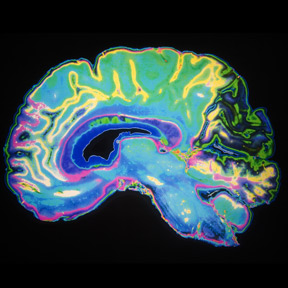Abstract
Early and progressive cortico-striatal circuit alterations have been widely characterized in Huntington’s disease (HD) patients. Cortical premotor area, M2 cortex in rodents, is the most affected cortical input to the striatum from early stages in patients and is associated to the motor learning deficits present in HD mice. Yet, M2 cortex sends additional long-range axon collaterals to diverse output brain regions beyond basal ganglia. Here, we aimed to elucidate the contribution of M2 cortex projections to HD pathophysiology in mice. Using fMRI, M2 cortex showed most prominent functional connectivity alterations with the superior colliculus (SC) in symptomatic R6/1 HD male mice. Structural alterations were also detected by tractography, although diffusion weighted imaging measurements suggested preserved SC structure and similar electrophysiological responses were obtained in the SC on optogenetic stimulation of M2 cortical axons. Male and female HD mice showed behavioral alterations linked to SC function, including decreased defensive behavioral responses toward unexpected stimuli, such as a moving robo-beetle, and decreased locomotion on an unexpected flash of light. Additionally, GCamp6f fluorescence recordings with fiber photometry showed that M2 cortex activity was engaged by the presence of a randomly moving robo-bettle, an effect absent in HD male mice. Moreover, acute chemogenetic M2 cortex inhibition in WT mice shift behavioral responses toward an HD phenotype. Collectively, our findings highlight the involvement of M2 cortex activity in visual stimuli-induced behavioral responses, which are deeply altered in the R6/1 HD mouse model.
SIGNIFICANCE STATEMENT Understanding brain circuit alterations in brain disorders is critical for developing circuit-based therapeutic interventions. The cortico-striatal circuit is the most prominently disturbed in Huntington’s disease (HD); and particularly, M2 cortex has a prominent role. However, the same M2 cortical neurons send additional projections to several brain regions beyond striatum. We characterized new structural and functional circuitry alterations of M2 cortex in HD mouse models and found that M2 cortex projection to the superior colliculus (SC) was deeply impaired. Moreover, we describe differential responses to unexpected sensory stimulus in HD mouse models, which relies on SC function. Our data highlight the involvement of M2 cortex in SC-dependent sensory processing and its alterations in HD pathophysiology.
Introduction
Huntington’s disease (HD) is a neurodegenerative disorder characterized by devastating motor symptoms, including chorea, and preceded by cognitive and psychiatric disturbances. HD pathology is caused by a CAG trinucleotide expansion (>36 repeats) in the huntingtin gene (Huntington’s Disease Collaborative Research Group, 1993) and results in a progressive degeneration of medium-sized spiny neurons in the caudate and putamen (striatum). The cortex is the main input to the striatum, and an early and progressive cortico-striatal disconnection has been extensively demonstrated by several studies in HD patients (Unschuld et al., 2012; Dogan et al., 2015) and animal models (Cepeda et al., 2007; Veldman and Yang, 2018). In HD patients, the most affected structural and functional striatal connections arise from cortical premotor areas, analogous to the secondary motor (M2) cortex in rodents. Notably, these affectations appear many years before the onset of motor symptoms in HD carriers (Unschuld et al., 2012; Shaffer et al., 2017; Estevez-Fraga et al., 2021; Johnson et al., 2021) and are profoundly impaired in animal models (Hintiryan et al., 2016; Creus-Muncunill et al., 2019; Fernández-García et al., 2020). However, it is unclear whether dysregulated information flow from the M2 cortex in HD affects only cortico-striatal functions or could have an additional impact in the remaining long-distance output nuclei.
Cortico-striatal circuits are required for motor learning processes (Costa et al., 2004; Cao et al., 2015; Kupferschmidt et al., 2017), and M2 cortex projection to the striatum has been associated to the motor learning deficits that characterize HD mice (Fernández-García et al., 2020). Furthermore, M2 cortex is involved in a variety of functions other than motor learning (Cao et al., 2015), such as decision-making (Sul et al., 2011) and perceptual behavior (Duan et al., 2021), as widely reviewed (Barthas and Kwan, 2017; Yang and Kwan, 2021). In this regard, pyramidal tract neurons from M2 cortex project ipsilaterally to striatum and also send collateral axons to the thalamus, subthalamic nucleus, superior colliculus (SC), pons, and spinal cord (Zhang et al., 2016; Economo et al., 2018; Gerfen et al., 2018). Yet, the involvement of M2 cortex circuitry to HD pathology has not been explored beyond basal ganglia.
In the present work, we aimed to determine the contribution of additional M2 cortex circuits to HD pathology using the R6/1 HD mouse model. First, we mapped alterations in M2 cortex functional connectivity with the rest of the brain in WT and HD mice, by using in vivo resting-state fMRI techniques. Then, we selected the SC as key M2 cortex target brain region and studied the structural connectivity of M2 cortex–SC pathway by diffusion MRI analysis. To determine M2 cortex–SC functional alterations in HD mice, we took advantage of optogenetic tools, fiber photometry, chemogenetics, and SC-dependent behavioral responses to unexpected visual stimuli, such as the presence of a moving robo-beetle (Almada et al., 2018) and an unexpected flash of light (Liang et al., 2015). Together, our results show the involvement of M2 cortex activity in visual stimuli-induced behavioral responses and that the M2 cortex activity is deeply impaired in the R6/1 HD mouse model….







